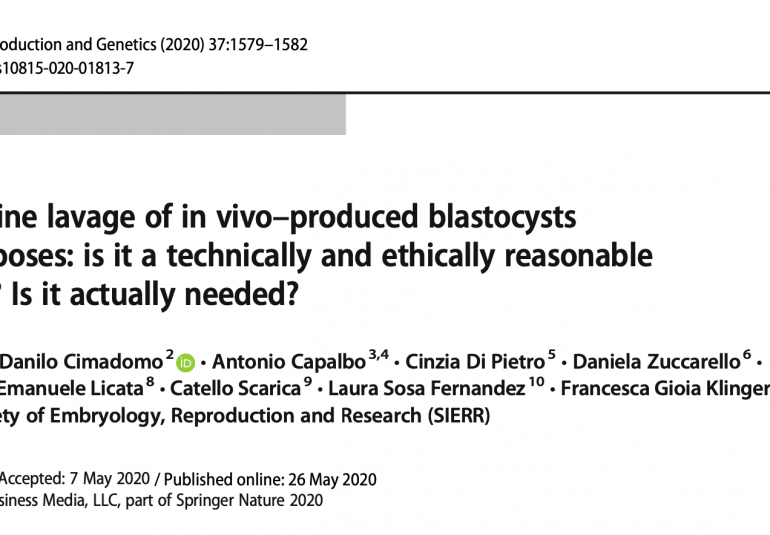
IUI and uterine lavage of in vivo–produced blastocysts for PGT purposes: is it a technically and ethically reasonable perspective? Is it actually needed?
Lucia De Santis, Danilo Cimadomo, Antonio Capalbo, Cinzia Di Pietro, Daniela Zuccarello, Attilio Anastasi, Emanuele Licata, Catello Scarica, Laura Sosa Fernandez, Francesca Gioia Klinger, On behalf of the Italian Society of Embryology, Reproduction and Research (SIERR)
Jornal of Assisted Reproduction and Genetics (2020) 37:1579–1582 https://doi.org/10.1007/s10815-020-01813-7 – Received: 7 April 2020 / Accepted: 7 May 2020 / Published online: 26 May 2020 # Springer Science+Business Media, LLC, part of Springer Nature 2020
Abstract
A recent study by Munné et al. portrayed a protocol to retrieve in vivo produced blastocysts after IUI and uterine lavage for preimplantation genetic testing (PGT) purposes. The authors claimed this protocol might represent a reasonable future perspec- tive for patients who do not want to undergo IVF, but still want to be informed about their embryos’ genetic/chromosomal defects. Although the intent of making PGT available also to patients who cannot or do not need to undergo IVF is respectable, the value of this study is undermined by severe technical and ethical issues. Munné and colleagues’ paper was discussed within the executive committee (i.e., president and vice-president of the society, director and vice-director of the scientific committee, secretariat, and counselors), the special interest group in reproductive genetics, the scientific committee, and the collegio dei probiviri of the Italian Society of Embryology, Reproduction and Research (SIERR). The points raised from this discussion are summarized in this opinion paper.
Keywords: Uterine lavage . PGT . Blastocyst . Ethics . Preimplantation development
